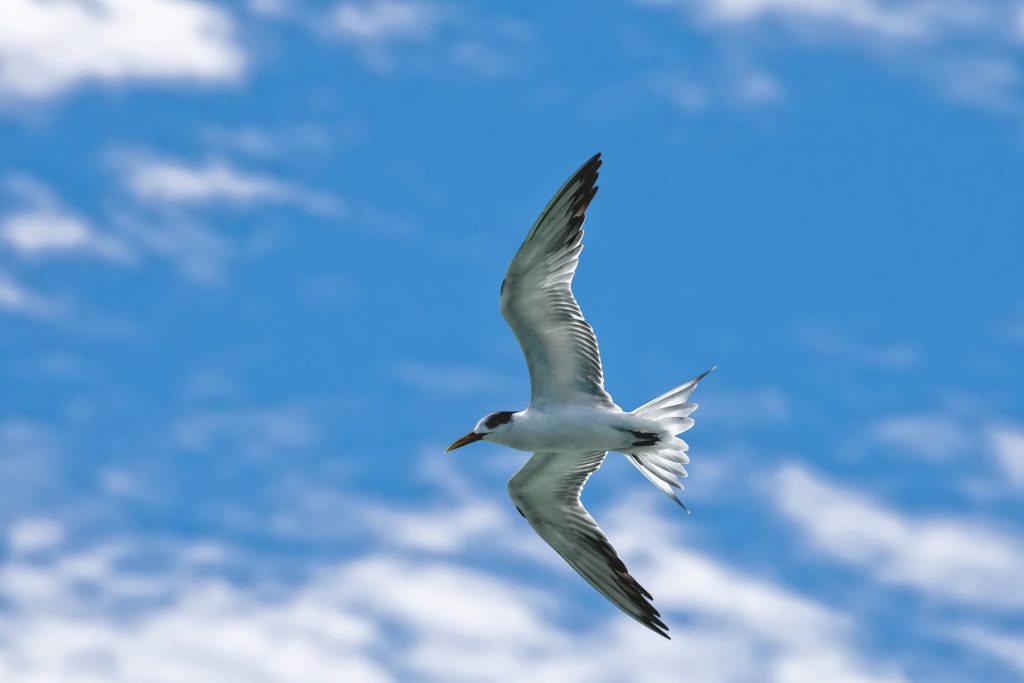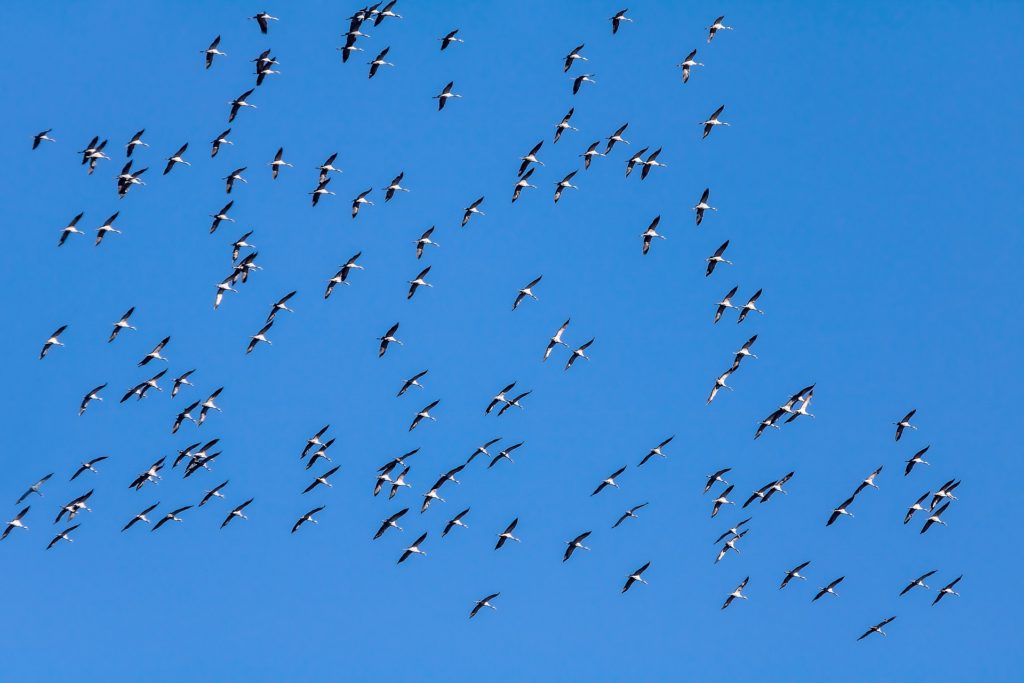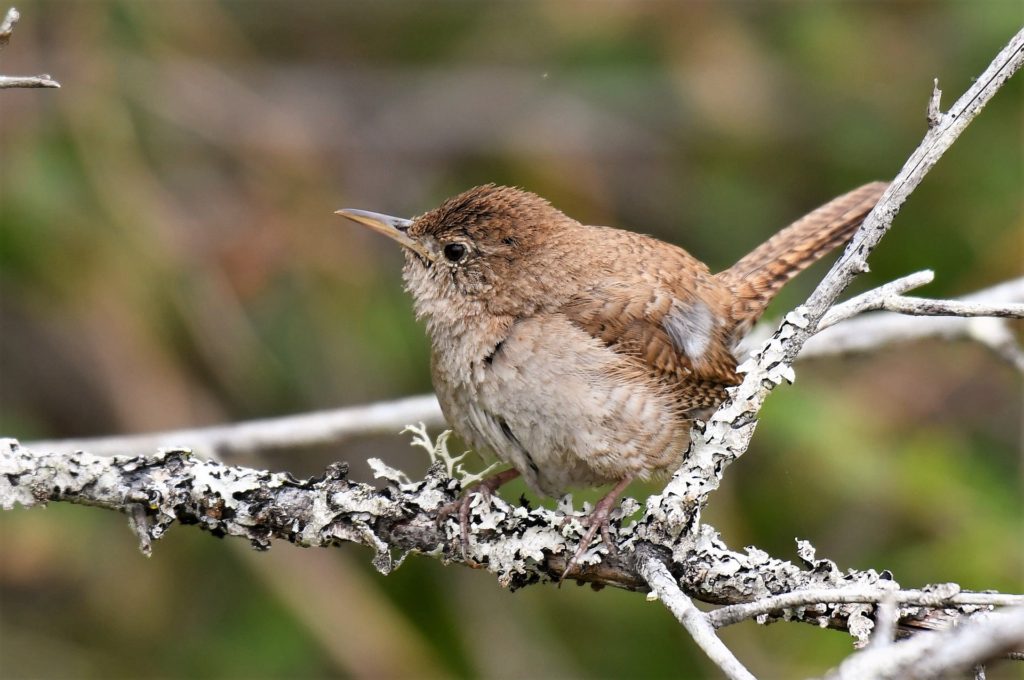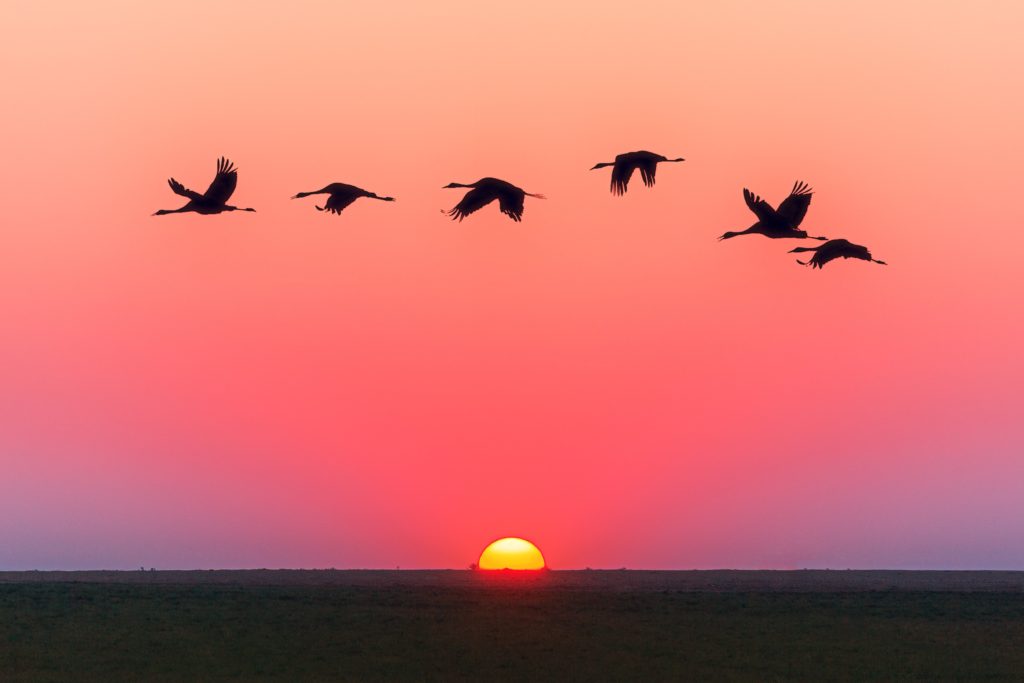You’ve seen them: flocks of birds flying in a V-formation. Ever wondered where they are all going? The Cornell Lab of Ornithology states that of the 650 bird species in North America, that more than half are migratory, or that they travel from one place to another at regular times throughout the year. We’ll break down the facts about bird migration, debunk commonly held migration myths, and discuss how migration has changed and what those changes mean to our environment.
Why Birds Migrate

Much like us as humans, who move for a job or to be nearer a better school for our kids, birds migrate from places with less resources to those that offer more to them and their family. When birds migrate, they are typically looking for two things: food and places to nest and raise their young. Many birds go south for the winter to trade freezing winter weather for warmer tropical climates. These warmer climates also often have a more abundant supply of food and more places to shelter and nest than the cold regions they left.
How Birds Migrate

Birds decide when to migrate based on the angle of the sun and the amount of daylight. This combined with changes in food supplies, air temperature, and weather patterns tell them that it’s time to go. Typically, birds migrate roughly the same time each year, usually in the spring and fall, birds can migrate at any time of the year based on these factors.
How do they know where they’re going? While they don’t have a GPS telling them to make a U-Turn, or that they just missed their turn, they rely on their own inherent navigation. In fact, a bird’s brain, bill, and eyes are wired as such that they sense the earth’s magnetic field, using it as a compass to find their way. During the night, stars guide them, and during the day, the sun’s position lets them know where to go. But, just like us, they also use natural landmarks like rivers and mountains to navigate their route.
The actual distance of migration varies. Some birds migrate only travel a short distance, while others can move the span of several states—and still others, across countries.
The four flyways

North American birds follow one of four “flyways,” or routes, when migrating:
The Pacific Flyway—Along the Pacific Coast, from northern Oregon to the California-Mexico border.
The Central Flyway—From Canada down to the Texas Gulf Coast in Mexico.
The Mississippi Flyway—From the intersection of the Mississippi and Missouri Rivers south towards the Gulf of Mexico.
The Atlantic Flyway—Down the eastern coast of the US to the tip of Maine, with routes intersecting South Carolina and the Delaware Bay.
North American Migratory Birds

Here’s a list of some migratory birds of North America:
- Canadian goose
- Great blue heron
- Heermann’s gull
- Least sandpiper
- Mourning dove
- Purple martin
- Red-tailed hawk
- Ruby-throated hummingbird
- Scoter
- Swainson’s thrush
- Western songbird
- White-crowned sparrow
- Woodland kingfisher
- Yellow-rumped warbler
Why Migration Matters

A recent study by the journal Nature Climate Change has found that earth’s rising temperatures are causing birds to migrate earlier each spring. Why is this a big deal? Changes in natural cycles like bird migration disturb the delicate balance of our entire ecosystem. And if this trend towards earlier migration continues, and birds start to migrate prematurely, the food sources they are counting on might not be available. This could have an adverse effect on young birds, and potentially cause even more of our already-declining bird population to die off.
How we can help migrating birds
Migrations are arduous journeys that take a lot of energy. We can help migrating birds by providing needed resources for them along their way, like:
- Providing bird feeders with high-calorie foods like suet
- Keeping your cats indoors (one cat kills an average of 55 birds a year)
- Not cleaning windows or using decals to prevent bird collisions
- Offering clean water in birdbaths, fountains, and other water features
- Cleaning bird feeders and bird baths regularly (once a month) to prevent spreading disease
Migration Myths and Facts

Myth: Birds fly in a V formation so that the lead bird keeps the wind off its followers.
Fact: Actually, birds fly in a V formation to create uplift, allowing them to fly longer distances while using less energy.
Myth: Feeding birds will stop them from migrating, causing them to die from starvation and cold in the winter.
Fact: Looking for food sources is only a small part of why birds migrate. And providing bird feeders with high-energy food sources like suet helps them prepare for the long journey ahead.
Myth: Birds only migrate in spring and fall.
Fact: While most of bird migration occurs at those times, birds migrate 365 days a year.
More migration facts
Fact: Some birds, like the Bar-headed Geese, have been known to fly upwards of 23,000 feet! (For comparison, Mount Everest—the world’s tallest mountain—is a little over 29,000 feet.)
Fact: One of the fastest migrations is that of the great snipe, which flies over 4,000 miles at a rate of 60mph.
Fact: Many migrating birds fly at night because the colder air temperatures allow them to fly further distances without overheating.
Fact: In the U.S. alone, almost one billion birds die each year due to window collisions.
Help Chirp Feed the Migrating Birds
International Migratory Bird Day is May 9th this year, but you can celebrate year-round by feeding migrating birds from your own backyard. Let Chirp help! We offer an assortment of bird feeders, birdbaths, and other bird-friendly accessories at our store in Big Bear Lake. You can also shop our online store, or join our Seed Club to get discounts on wild bird feed—sign up is free! Together, we can make a difference in our communities—both human and feathered!
Flyways map image courtesy of Ducks Unlimited Canada.


